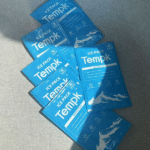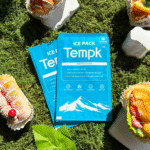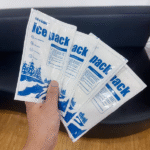What Is the Maximum Dry Ice Allowed per Package?
Le maximum dry ice allowed per package depends on mode and operator: air cargo typically permits 200 kg Voici ici 954, passenger baggage allows 2.5 kg, and USPS domestic air caps 5 kg. You’ll stay compliant by venting CO₂, marquage UN1845, and stating net weight in kilograms. This guide gives you simple rules, a calculator, and pack‑out checklists to avoid rejection and keep products safe.
-
Fast limits: Le maximum dry ice allowed per package by air cargo, bagages de passagers, USPS, and ground.
-
Compliance essentials: Étiquettes, marques, and venting that pass acceptance checks.
-
Calculatrice: Convert dry ice to CO₂ gas and right‑size pack‑outs for your route and hold time.
-
Carrier nuances: When operators lower the ceiling and how to plan for it.
-
Real‑world tips: Vaccine kits, fruit de mer, and e‑commerce scenarios that ship cleanly.
How is the maximum dry ice allowed per package set in 2025?
Réponse courte: Air cargo packages are typically limited to 200 kg Sous pi 954; bagages de passagers est 2.5 kg (5.5 kg) per person/package with airline approval; Air domestique USPS est ≤5 livres par courrier; sol follows 49 CFR exceptions and operator rules. Ventilation, “UN1845” marking, Kg net, et classe 9 étiquettes are non‑negotiable.
Le maximum dry ice allowed per package reflects safety in enclosed spaces. La glace sèche sublime à Co₂; in aircraft holds this can displace oxygen and raise pressure. Operators therefore enforce per‑package caps and sometimes per‑flight totals. Ground networks rely on venting and marking rather than a single national number. Always confirm operator variations before packing.
Voici pi 954: maximum dry ice allowed per package for air cargo
Under PI 954, you can load up to 200 kg per package when packaging releases CO₂, est strong, et est correctly labeled. Airlines may set a lower ceiling by aircraft or route. For baggage, le 2.5 kg personal limit protects passengers and crew. USPS domestic air mail caps dry ice at 5 kg par morceau; heavier amounts must go surface/ground.
| 2025 quick limits by mode | Standard cap | Conformité de base | Ce que cela signifie pour vous |
|---|---|---|---|
| Air cargo (PI 954) | 200 kg | Emballage ventilé; UN1845; Classe 9; filet kg | Design shipper and AWB to PI 954; verify operator caps |
| Bagages de passagers | 2.5 kg pp | Airline approval; ventilé; mark “Dry ice” and weight | Small personal perishables only |
| Air domestique USPS | 5 kg | Pub 52 règles; ventilation; marques | Keep mailpieces ≤5 lb or switch to ground |
| NOUS. sol (49 CFR) | Exception ≤2.5 kg; >2.5 kg allowed with added rules | Ventilé; marques; carrier acceptance | Flexible but still regulated, especially in enclosed vans |
Conseils et suggestions pratiques
-
Pharma kit (36–72 h): Use VIP shippers; aim 10–20 kg per package—well below the maximum dry ice allowed per package yet long‑lasting.
-
E‑commerce frozen foods (48 h): Choose faster service + thicker EPS to stay under USPS 5 kg air cap.
-
Voyage des passagers (seafood/meds): Paquet ≤ 2,5 kg in a vented cooler; DÉCLARIER AU CHICK-IN.
Par exemple: A vaccine lane reduced rejections by switching to pre‑printed PI 954 labels and logging Kg net sur l'AWB. Acceptance time dropped, and cold excursions fell on the route’s hottest month.
How do you calculate the maximum dry ice allowed per package safely?
Idée de base: 1 kg dry ice → ~541 L CO₂ gas at STP. Right‑size dry ice so expected gas fits your package’s venting capacity and the operator’s per‑package limit. Le maximum dry ice allowed per package should never exceed either your vent capacity or the regulatory ceiling.
Use this simple two‑step method from the shipper’s perspective. Keep sentences short. Use round numbers.
-
Estimate gas volume:
dry ice (kg) × 541 = CO₂ liters. -
Check venting: Your packaging should safely relieve that gas over the trip. If not, reduce dry ice ou upgrade insulation.
CO₂ venting, étiquetage, and documentation behind the limit
-
Ventilation: Never seal liners airtight. Lids must lift or vent.
-
Marquage: Imprimer «Dioxyde de carbone, solide (Glace sèche), UN1845” et Kg net on the outer box.
-
Étiquette: Appliquer Classe 9 hazard diamond; keep the net kg outside the diamond border.
-
Docs: For air cargo, inclure UN1845 et Kg net sur le bilan aérien. Some cases require a DG declaration.
| What to print | Minimum detail | Placement | Pourquoi ça compte pour toi |
|---|---|---|---|
| Nom d'expédition approprié | «Dioxyde de carbone, solide »ou« glace sèche » | Address side | Universal identification |
| Numéro de l'ONU | UN1845 | With the name | Acceptance check passes faster |
| Net quantity | kg seulement (not lb) | Near address; dehors étiquette de danger | Prevents re‑labeling delays |
| Class label | Classe 9 diamant | Flat, clean surface | Visual cue for handlers |
Which carriers and services change the maximum dry ice allowed per package?
Airlines and integrators can set lower caps than PI 954. Attendre 2.5–10 kg caps in some express networks for standard parcel air services. Bagages de passagers holds at 2.5 kg per person/package with airline approval. USPS capuchons 5 kg for domestic air; heavier pieces must move surface/ground with “Surface Mail Only” marking. Sol carriers will carry >2.5 kg per package under additional rules—confirm acceptance first.
USPS, bagages de passagers, and ground exceptions—how to plan
-
Air USPS (≤5 livres): Upgrade insulation or compress transit time to stay under the cap.
-
Passenger (2.5 kg): Déclarer, marque, and use vented containers. For more volume, ship cargo.
-
Sol >2.5 kg: Apply full markings and ensure driver awareness in enclosed vehicles.
2025 developments and trends shaping the maximum dry ice allowed per package
Aperçu de la tendance: Dans 2025, cold chain programs focus on optimal—not maximal—dry ice. Intelligent CO₂ sensors, automated venting, et PCM hybride + glace carbonique pack‑outs reduce risk, re‑ice events, and emissions. Operators are tightening per‑flight CO₂ load planning in hot seasons and animal‑carriage routes. Update SOPs with current label formats and bigger type for Kg net readability.
Quoi de neuf (en un coup d'oeil)
-
Smart CO₂ monitoring: Real‑time gas + temperature alerts cut surprise rejections.
-
Hybrid pack‑outs: PCM + modest dry ice extends hold time with less total CO₂.
-
Acceptance UX: Carriers emphasize pre‑booking quantity checks and clear label placement.
Perspicacité du marché: Biologics and gene therapies keep demand high. Reusable VIP systems and route‑specific pack‑outs reduce total dry ice while maintaining deep‑frozen lanes. Teams that model sublimation against per‑hold caps avoid last‑minute splits and delays.
Questions fréquemment posées
Q1. What is the maximum dry ice allowed per package on air cargo?
Typiquement 200 kg Sous pi 954, but operators can set lower numbers. Book early and confirm.
Q2. What is the maximum dry ice allowed per package in passenger baggage?
2.5 kg (5.5 kg) per person/package with airline approval in a ventilé récipient.
Q3. What is the maximum dry ice allowed per package in USPS domestic air?
5 kg par courrier. Heavier pieces must travel surface/ground and be marked accordingly.
Q4. Can I exceed 2.5 kg on ground?
Oui, but you lose the small‑quantity exception and must meet added hazmat and carrier rules.
Q5. Where do I write the net weight?
On the outer box in kilogrammes, pas inside the Class 9 diamant.
Q6. Does form (pellets vs blocks) change the maximum dry ice allowed per package?
No—the cap is net mass. Pellets sublimate plus rapidement, so plan slightly higher loads for the same hold time.
Q7. Ai-je besoin d'une déclaration de l'expéditeur?
Parfois. For non‑DG products cooled by dry ice, you often only note UN1845 and net kg on the AWB. Check your operator’s rules.
Résumé et recommandations
Points clés: Le maximum dry ice allowed per package est 200 kg for air cargo (typically), 2.5 kg for passenger baggage, et 5 kg for USPS air. Always vent CO₂, marque UN1845 et Kg net, and confirm operator variations. Use VIP or hybrid pack‑outs to lower required mass and stay well below caps.
Étapes suivantes:
-
Map your mode and route; apply the correct cap.
-
Use the estimator above to size dry ice and validate venting.
-
Print compliant labels and pre‑book quantities with the carrier.
-
Add CO₂ and temperature logging to every high‑value lane.
CTA: Need a PI‑954‑ready label set and pack‑out checklist? Parler à tempk aujourd'hui.
À propos du tempk
We design and validate IATA‑compliant dry‑ice and PCM systems for biopharma, nourriture, and specialty logistics. Our engineers combine packaging science with airline acceptance know‑how to cut rejections and re‑ice costs. Clients see fewer delays and more stable temperatures thanks to right‑sized dry ice and better venting.
Let’s optimize your route: Request a lane‑specific pack‑out and labeling template from our team.
























